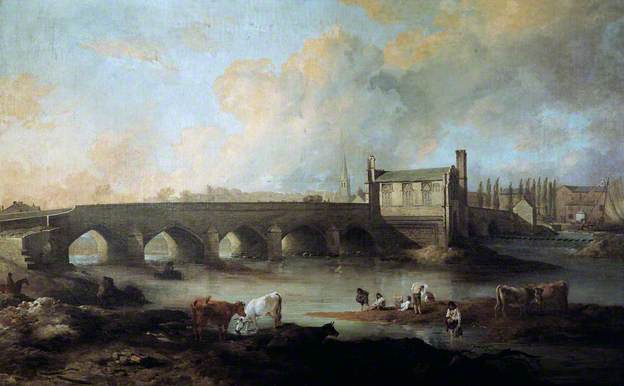Medieval Bridge Chapels and Bridge Hermits

In one of my upcoming books “The Death of the Official” Sir Roger Mudstone has an unfortunate encounter with a hermit collecting a toll on a bridge crossing a river. In the late medieval period it was fairly common for bridges to have all manor of buildings built on them. Perhaps one of the most common were chantry chapels. These were where prayers could be said for the souls of the founders and benefactors of the bridge. Donations were often collected for the upkeep of the structure. Bridge maintenance could be an expensive and ongoing task. However, to the medieval mind bridges with chapels could be thought of as less likely to collapse as the dedication of the chapel, often to a local saint or perhaps Saint Mary herself would offer some protection to the rest of the structure.
They were also a place for travellers and pilgrims to pray for a safe journey and attend mass. To the medieval pilgrim the bridge played a key role in a journey where the alternatives were dangerous ford and ferry crossings.
There are few medieval chapels associated with bridges that survive in England. Two important examples can be found in the West Riding of Yorkshire at Wakefield (see picture above) and at Rotherham. There are other significant chapels at Rochester and at Bradford Upon Avon. In the aftermath of the Protestant Reformation many chapels were destroyed or fell into disuse and were eventually demolished. Some that did survive found new purpose as storage, offices and even gaols or shelters for livestock.
Most chapels would have a resident priest who said Mass for the travellers and pilgrims. He would often also live in the chapel. As travel could be dangerous in the medieval period the priest would often also be expected to say prayers for those injured, robbed or killed on the roads.
Another common presence at medieval bridges would be a hermit who would assist in the maintenance of the bridge and sometimes collect tolls. Occasionally hermits would be specifically granted alms for use in building small bridges.